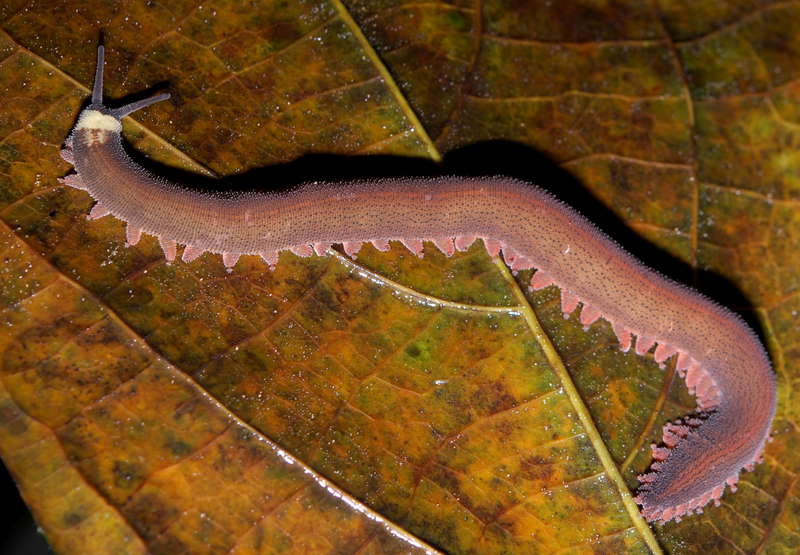
Geoff GaliceA type of velvet worm that everyone but me knew about already.
Every time a new species is discovered, we think “wow, how amazing is it that these peculiar creatures have been out there all this time and nobody knew about it. Who knows what other marvels the planet might hold?” This is almost completely inaccurate, since usually an officially “new” creature has been seen many times but just not officially recognized as a separate species in scientific taxonomy. But OK, shut up. We are not ashamed of having a sense of wonder, you shrivel-hearted pragmatist.
In the case of the newly discovered Vietnamese velvet worm, scientists actually already knew that there were worms running around in rainforests that are basically built like little waterbeds and spit sticky glue on their prey. All they’ve found is a type that has a different shape of hairs. BUT I DIDN’T KNOW, so the discovery of this new species actually enriches my life significantly. So fine, I will enrich yours in turn.

Oliveira et al / Zoologischer AnzeigerThe new velvet worm.
Basically, velvet worms are just sacs of fluid with a velvety coating like the top of an air mattress. (I don’t know why I keep comparing them to mattresses. Maybe I am sleepy?) They have no bones; they have no exoskeleton; all they have is a skin kept rigid by the pressure from their liquidy insides. They don’t even have joints, which is why their legs look like the legs of gummy bears. Scientific American:
Unlike arthropods (a huge group of animals that includes ants and spiders), velvet worms lack hard exoskeletons. Instead their bodies are fluid-filled, covered in a thin skin and kept rigid by pressurized liquid. This hydrostatic pressure allows them to walk, albeit very slowly, on fluid-filled, stubby legs that lack joints.
But just because they walk slow and are filled with goo doesn’t mean they aren’t dangerous — at least if you’re one of the tiny critters they eat:
To hunt, they sneak up on other insects or invertebrates. And that’s when the sliming begins — velvet worms like the newfound species hunt by spraying a “net of glue” onto their prey from two appendages on their backs, [discoverer Ivo de Sena] Oliveira said. This nasty material consists of a mix of proteins that impedes movement. “The more the prey moves, the more it gets entangled,” he said.
Oftentimes the velvet worms will eat any excess “glue,” which is energetically costly to make. Although the animals have been shown to take down prey larger than themselves, they often choose smaller creatures, likely to ensure they don’t waste their precious bodily fluids, Oliveira said.
(Worms from the new species are about 2.5 inches long, so “smaller” is quite small indeed.)
Anyway, isn’t it incredible that such marvels are in the world, and nobody even suspected? I said NOBODY EVEN SUSPECTED. Shut up.




